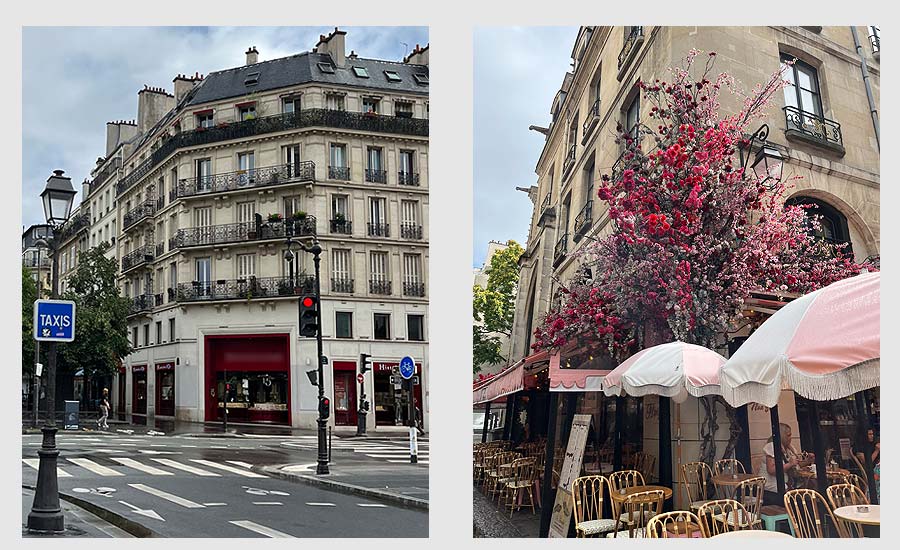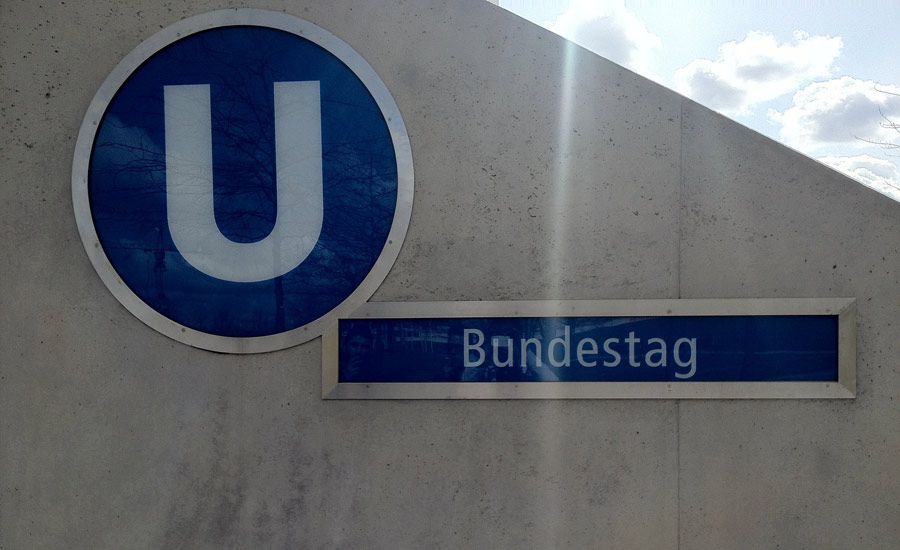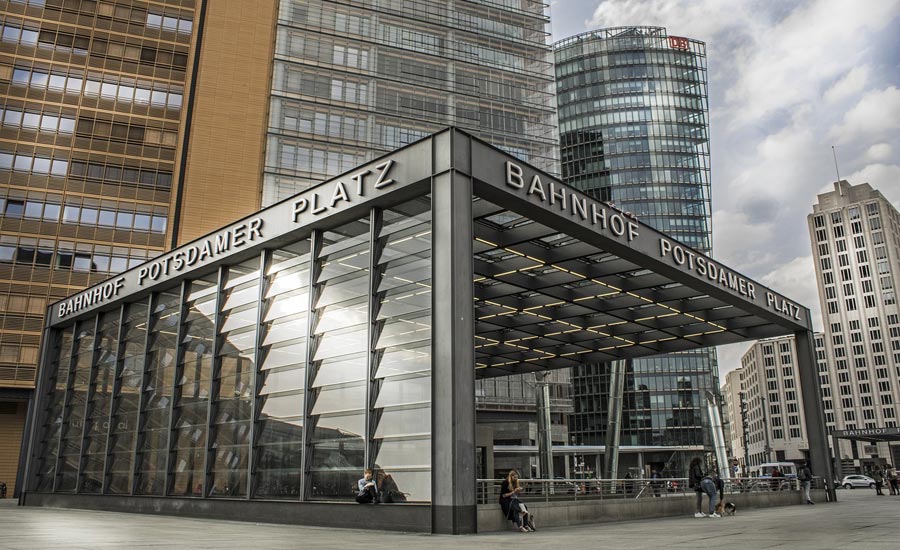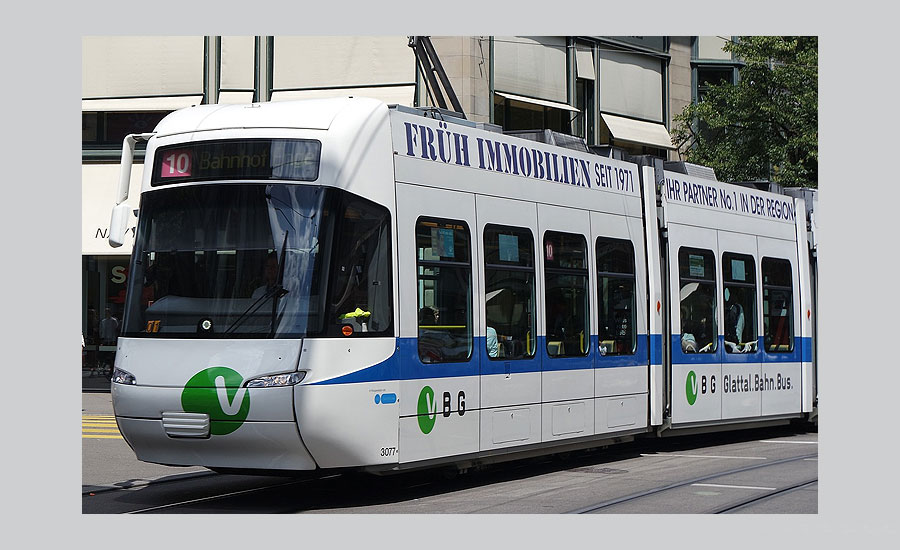Holiday4.com
Contact
letstalk@holiday4.comIn this article, we look into the Public Transport system of Paris, including the best ways to move around the city, plus the various ticket options available for tourists.
1. What is Public Transport like in Paris?
When it comes to public transport, Paris has an outstanding system that includes the Metro, RER regional train (Réseau Express Régional), and bus services, making it easy for tourists to move around the city quickly and confidently. These three modes of transportation are well-integrated, making it convenient to pay, purchase and use the ticket systems.
The state-owned Paris public transport network operator "Autonomous Parisian Transportation Administration" (RATP for short) is responsible for most of the public transport in the Greater Paris area, including the Paris Métro, the Île-de-France tram and RATP bus network, plus part of the regional express rail (RER) network.
2. How to use the Paris Metro?
The Paris Metro is relatively easy to use. When exploring Paris, you'll likely use both the Metro and RER Regional Train Transport systems. The Metro stations are labelled with the letter M or the words Métro or Métropolitain (Note! They have a lot of stairs and few lifts, so can be difficult to navigate with a lot of luggage.) The Metro system has 16 lines, each identified by a number, colour, and end-of-line name (which represents the last stop on the line). With over 300 stations and 136 miles of track, the Paris Metro is extensive, and nearly every central tourist attraction is easily accessible from a Metro station. You can download a copy of the Paris Metro map here.
The travel area in Paris is divided into five zones radiating out from the centre, with ticket prices varying depending on the number of zones you need to use or pass through. Most city centre tourist attractions and hotels are within Zone 1 & 2 which is where the Metro system is primarily located. The Sacré Coeur is in Zone 1, while Orly and Versailles are in Zone 4, and Disneyland (Marne-la-Valee) station is in Zone 5. The subway opens at 5:30 a.m. and closes at 1 a.m. (2 a.m. on Friday and Saturday).
The Metro's ticketing structure is relatively straightforward. A standard single-journey ticket costs €2.10 and is called a t+ Ticket (see picture below) and is valid for 90 mins once validated; it also allows you to make as many transfers as you want on the metro and RER networks, also available in a carnet of 10 (which will soon be phased out). Additionally, there is a weekly travel pass, monthly travel cards, plus a tourist pass. The Metro and RER systems complement and connect perfectly with each other, and they use the same ticketing and travel card systems.
3. What is the best travel card or pass for the Paris Metro?
To ride the metro, it's recommended to purchase a Navigo Easy Travel Card. This contactless, rechargeable card costs 2 Euros and can be bought and topped up at most stations - the card can be loaded with individual tickets or weekly/monthly passes. Alternatively, you can download the Bonjour RATP app to pay via your phone.

4. Paris Metro - Step by Step:
- Carry a paper map of the Paris Metro Network at all times.
- Find the (M) Métro or Métropolitain entrance. Choose your destination and travel zone, (make a note of the end station and the colour/number of the line). Select your language at the ticket machine and purchase a ticket using cash or credit card (chip & pin).
- Tap your card/pass or insert the paper ticket into the turnstile, move through the doors, and don't forget to collect your ticket - you may need it later. Follow the platform signs for your line colour and number.
- Check your destination is between you and the end station on the line - the end station (Termini) is shown on platform displays and most trains. Follow your travel route on a metro map - and know when to get off.
Don't panic - most larger stations have a manned kiosk for ticket sales and advice.
5. Paris - City Tourist Pass Recommendations.
A city tourist pass that includes travel on local public transport and entrance to top museums, monuments and attractions 'is often recommended' as a preferred option; however, we believe Paris might be an exception.
There are multiple independent companies advertising combined transport and attraction entry pass services for Paris, with many offering an array of Pass options that can sometimes appear confusing, especially relative to entry conditions and use.
When visiting Paris (especially for the first time) we suggest doing a lot of planning before you arrive. First, plan your sightseeing itinerary, research what you want to see and identify the places you need to book in advance. Contact the venues directly to book and pay for tickets, especially museums like the Louvre, where you should book a time slot 'in advance' to guarantee admission (in case of overcrowding) - the same applies to the Eiffel Tower and Orangerie Museum.
To travel around Paris, we recommend purchasing an official travel pass from RATP (you can buy your pass easily on arrival). There are plenty of transport pass options you can buy, but the following are two you should consider:
- The One-day Navigo travel pass starts at €8.45 per day and provides unlimited travel across all modes of transport throughout Paris. You get unlimited travel across your chosen zones for 1 day.
- The Paris Visite travel pass. The Visit Paris pass is valid for 1, 2, 3 or 5 days - starting at €14.00 for 1 day. The Pass provides unlimited travel in Paris (zones 1 to 3) and the Île-de-France region, using all of the public transport networks.
To sum up: For some visitors, a tourist-inclusive Pass will be worth having - but for others, a Pass is unnecessary and possibly confusing. If you prefer the benefits of just a tourist attractions Pass - check out the Paris Passlib' – the Official City Pass.
Also, check out the recommended Paris Museum Pass - it offers access to over 50 museums and monuments in Paris and the Paris region, including the impressive Musée d'Orsay. Do more research when choosing a City Pass, look for possible restrictions as well as the benefits and check the 'terms of service' fit your needs.
6. What is the River Seine Cruise - is it worth doing?
The River Seine is regarded as 'one of the most beautiful avenues in Paris' and is definitely worth exploring. There are several short duration mini cruise operators to choose from, with most cruises lasting for around one hour, allowing you to take in many of the city's highlights, including the Eiffel Tower, the Louvre, the Musée d'Orsay and the Notre Dame Cathedral.
Many cruise boats have an open-top deck to enjoy the sunshine (whatever the season), and there's also a covered and heated interior space for colder days. Remember, many of Paris's most famous and important buildings, bridges, and attractions can be seen from the river, plus the leisurely pace can be a welcomed break from the busy city - see below for more details.
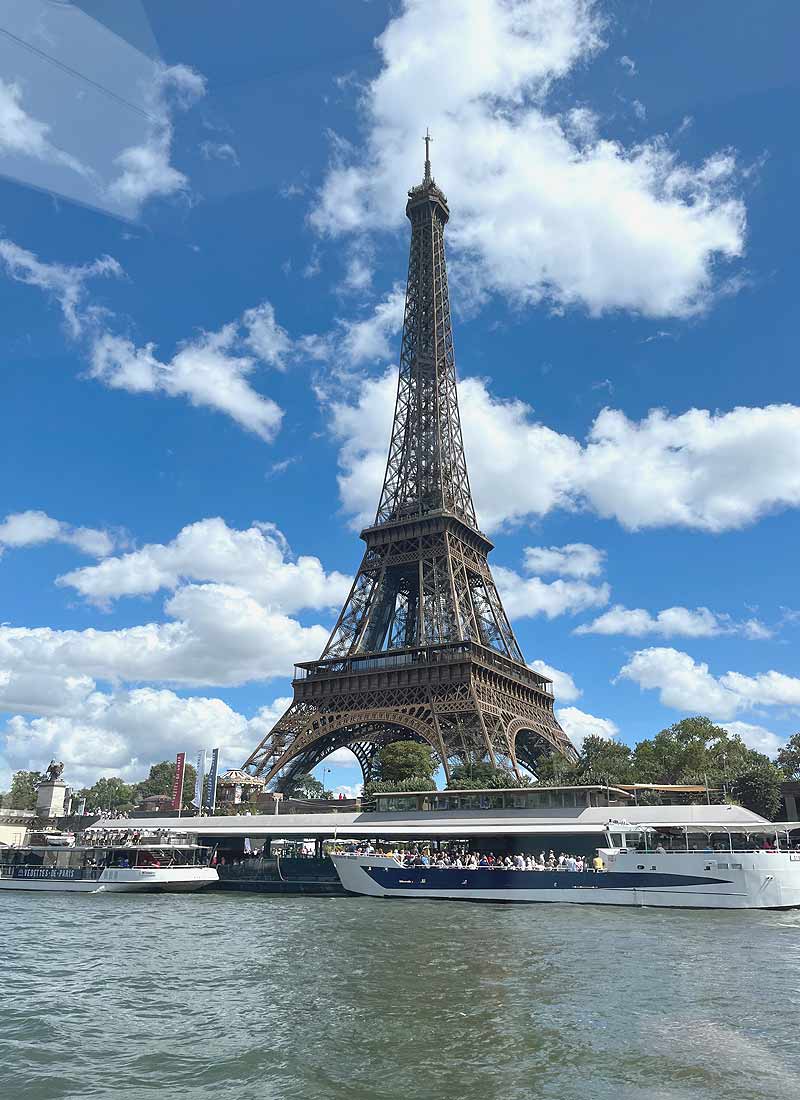
Main monuments and sights along the Seine include:
- The Louvre & The Eiffel Tower.
- The Grand Palace & The Place De la Concorde.
- The Notre Dame Cathedral & The Orsay Museum.
- The Invalides Hotel & The City Hall.
- The Conciergerie & The Hotel-Dieu.
- The Tokyo Palace & The Clock Tower.
Tickets should be booked in advance for peak dates. A typical adult price is between €15-35 and includes 1 hour guided cruise with live commentary in French & English.
6. Travelling by Bus and other travel tips.
Getting around Paris is easy and convenient using the Bus Transport System. The service has over 60 lines within the city limits, each line is marked with a name and number for easy identification. You can purchase tickets directly from the driver or use a t+ ticket or your Navigo Easy Travel Card. Just like the Metro, the front of the bus displays a line number plus final destination. To help plan your bus journey, use this handy RATP route planner tool.
- As soon as you arrive in Paris, grab a 'Visit Paris Region' tourist map issued by the Paris Tourist Office - Paris Je T'aime. The map includes a list of over 80 Museums, Mounuments and Leisure Attractions plus their locations - it also contains a handy Metro Map.
- Buy a Travel pass for use on the Metro and Bus services, it will save you time (and possibly money) - compared to buying individual tickets.
- Don’t worry if you get on a train travelling in the wrong direction - you simply get off at the next stop and get on the train in the right direction.
- Remember, Paris (like any other capital city) has its fair share of individuals looking to take advantage, especially the pickpockets. Paris is as safe as any European capital, but follow these three simple rules when travelling around and remain vigilant. (1) Cover up expensive-looking jewellery. (2) Try not to look lost outside train and metro stations. (3) Keep your passport, cards, and phone zipped up on your person - or in deep pockets, or best of all - use a concealed travel/money belt.
- Remember, If you have not validated your travel ticket, you are considered to be travelling without one, and you could be fined.
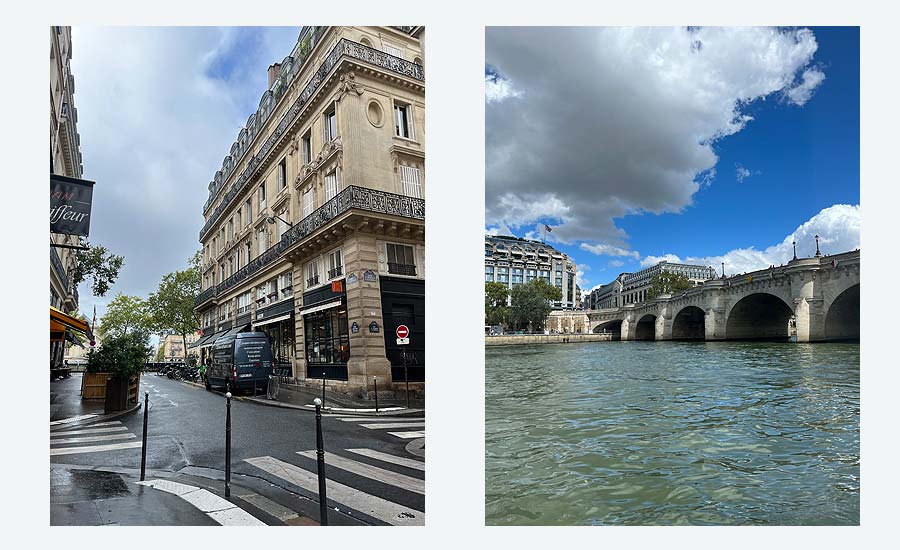
7. How to use Paris Taxis?
Taxis are easily accessible and can be hailed from the side of the road or found at designated taxi ranks. Busy taxi stations often have an official dispatcher to guide you to the next available taxi. To ensure you are using a licensed taxi, look for the "Taxi Parisian" sign on the roof and make sure the license badge and fare meter are correctly displayed and functioning - taxi scams are rare (but can occur), mostly by unlicenced taxis, so always remain vigilant.
Paying for Taxi fares: Cash is usually preferred for short distances, and credit cards are typically accepted for longer journeys like those to the airport. Before getting into a taxi, confirm with the driver that cards are accepted, especially if you only have a small amount of cash available. It's also a good idea to have your destination (and possibly a preferred route) saved on your digital device, should your driver not speak your language, or to just clarify your destination.
Price: City Taxi travel is not overly expensive, especially when 2 or more passengers are travelling - also, taxis provide a welcomed break from a hot and busy Metro system. Remember, additional fees will be added to metered fares for pick-ups at train stations and hotels, and if you're travelling with luggage; for current prices see the additional fee chart posted inside the cab.
Booking a Taxi: If travelling to the airport, remember to book your taxi the day before, and book a pick-up time at least 3-4 hours before your flight departure, as pick-up times often run late due to busy traffic. Also, when pre-booking taxis, drivers start their meters from the time the taxi is dispatched to you - so expect to see a small charge on the meter as you enter the cab.
Tipping: Tipping isn't required in Paris as tips are built into the taxi fare; however, the local custom is to round up the fare, or tip 5 to 10 per cent maximum - or a few euros extra if the driver helps you with luggage. Also, remember to use "Bonjour," "Bonsoir," "S'il vous plait," and "Merci" - conversing with the driver using just the basics can often provide a more positive taxi ride experience.
8. How to travel from Paris Airports to the City.
From CDG Airport to Paris city centre: The fastest service from Charles de Gaulle International Airport (also known as Roissy) is by train, the service is called RER-B.
Trains: The journey takes 30 minutes, with trains departing CDG every 10 Minutes. Tickets can be bought at kiosks or automated vending machines at the airport station and cost around €12 each way - you'll need to keep your ticket to exit the service on arrival at Gare du Nord, (or other city rail station). You can then use your RER ticket on the Metro, to travel to your final city destination.
Taxis: Taxis are available from stands located outside the arrivals terminal. Imprtant! Do not engage with drivers who approach you in the arrivals hall - they are not officially licenced taxis.
Taxi fares from CDG to the city are charged at a flat rate of between €50-55, with an additional 15% supplement for travel between 5pm and 10am - plus additional charges for extra luggage. Travel time can be between 40 minutes to 1 hour depending on traffic.
Top Tips: If you're travelling with lots of luggage, don't use the Metro during busy commute times (use a bus or take a cab instead). Also, look out for pickpockets at all stations, and don't advertise your phone - keep it zipped up and safe.
Now you can relax - enjoy your adventure in this fascinating (and still very romantic) - capital city of culture.
